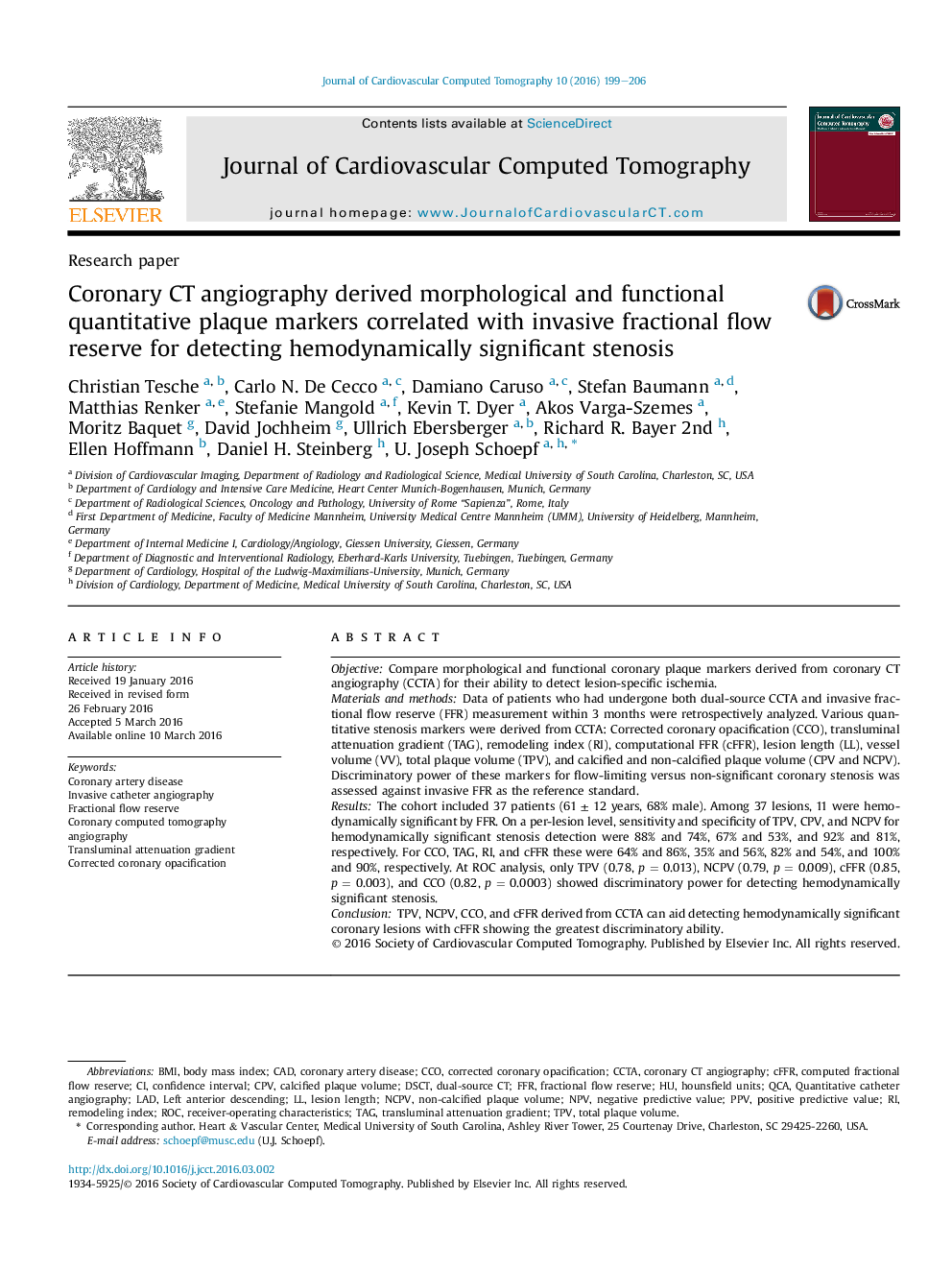| Article ID | Journal | Published Year | Pages | File Type |
|---|---|---|---|---|
| 2964252 | Journal of Cardiovascular Computed Tomography | 2016 | 8 Pages |
ObjectiveCompare morphological and functional coronary plaque markers derived from coronary CT angiography (CCTA) for their ability to detect lesion-specific ischemia.Materials and methodsData of patients who had undergone both dual-source CCTA and invasive fractional flow reserve (FFR) measurement within 3 months were retrospectively analyzed. Various quantitative stenosis markers were derived from CCTA: Corrected coronary opacification (CCO), transluminal attenuation gradient (TAG), remodeling index (RI), computational FFR (cFFR), lesion length (LL), vessel volume (VV), total plaque volume (TPV), and calcified and non-calcified plaque volume (CPV and NCPV). Discriminatory power of these markers for flow-limiting versus non-significant coronary stenosis was assessed against invasive FFR as the reference standard.ResultsThe cohort included 37 patients (61 ± 12 years, 68% male). Among 37 lesions, 11 were hemodynamically significant by FFR. On a per-lesion level, sensitivity and specificity of TPV, CPV, and NCPV for hemodynamically significant stenosis detection were 88% and 74%, 67% and 53%, and 92% and 81%, respectively. For CCO, TAG, RI, and cFFR these were 64% and 86%, 35% and 56%, 82% and 54%, and 100% and 90%, respectively. At ROC analysis, only TPV (0.78, p = 0.013), NCPV (0.79, p = 0.009), cFFR (0.85, p = 0.003), and CCO (0.82, p = 0.0003) showed discriminatory power for detecting hemodynamically significant stenosis.ConclusionTPV, NCPV, CCO, and cFFR derived from CCTA can aid detecting hemodynamically significant coronary lesions with cFFR showing the greatest discriminatory ability.
